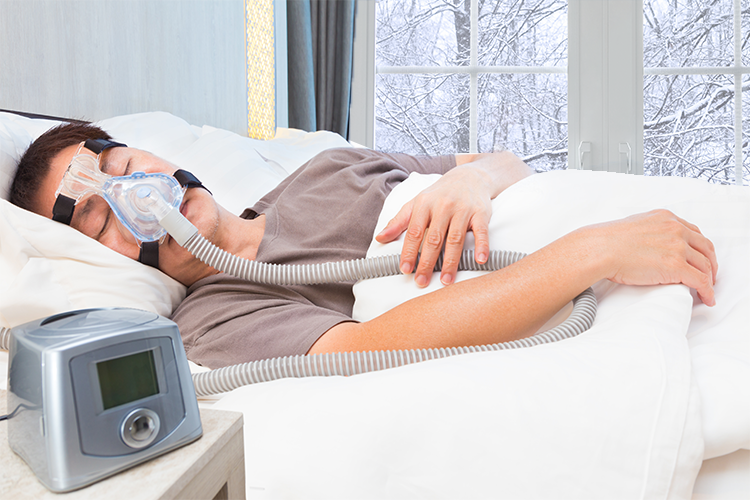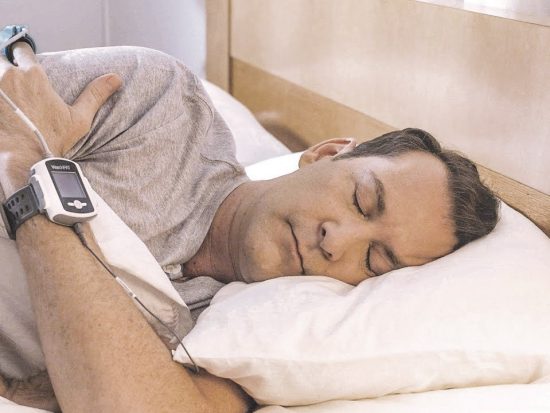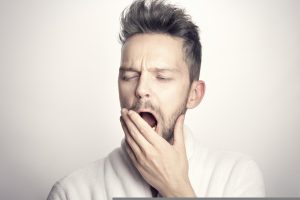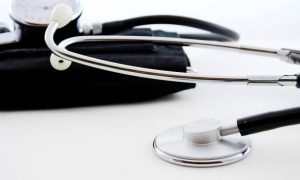If you suffer from Sleep Apnoea, you may have noticed that your symptoms are more severe during colder months. Is there any validity to this observation? You might be surprised to learn that some studies have confirmed a relationship between the seasons and the severity of Obstructive Sleep Apnoea (OSA). What have they found, and are there any treatment options available?
The Notion of Seasonal Sleep Apnoea
We know that common illnesses such as colds and sore throats are more prevalent during the winter months. This same trend seems to hold regarding Obstructive Sleep Apnoea. Clinics found that the number of individuals seeking treatment rose by six per cent during the winter.
Additionally, the number of times per hour that individuals briefly stopped breathing likewise rose. This leads to an important question: why might your symptoms be worse in winter than in autumn, spring or summer?
Why Might Symptoms Be Worse in the Winter?
The most obvious answer to this question involves illnesses associated with the upper respiratory tract, such as the common cold. As your airway becomes more irritated, this irritation worsens the symptoms associated with Obstructive Sleep Apnoea. Still, there could be other forces at play.
The air condition within your home could also play a very important role. As your windows are more likely to remain closed, any suspended particulate matter (such as dust or allergens) will linger longer. This is even more relevant if you happen to use a wood-burning stove regularly. Soot and smoke in the air will undoubtedly exacerbate the symptoms of OSA.
The dryness of the air is yet another variable. Anyone diagnosed with Sleep Apnoea knows that low humidity levels can worsen the condition.
Central heating and space heaters tend to pull moisture from the air, increasing the number of times you stop breathing each night. Some other factors which might contribute to seasonal Sleep Apnoea can include:
- Higher sensitivity to pain due to increased barometric pressure.
- Lower levels of vitamin D as a result of fewer hours of sunlight.
- Potentially higher levels of carbon monoxide (1).
- More severe snoring sessions.
Undoubtedly, all the factors mentioned above can play a very real role in the frequency and symptoms associated with Obstructive Sleep Apnoea. However, might other variables exert just as profound of an influence?
Are There Any Other Variables to Consider?
It should be mentioned that the frequency of OSA symptoms in winter is slightly higher than at other times of the year. We must also point out that there is a high likelihood of what is known as the “compounding effect”.
You see, preexisting conditions such as obesity or poor health could simply exacerbate all the situations we’ve discussed here.
Also, many individuals are more likely to seek the advice of a doctor over the winter months due to another illness such as a cold or the flu. Thus, the chances are higher that they will report any complaints associated with Sleep Apnoea during the same visit to save time.
Finally, anyone who is already feeling “under the weather” will naturally feel the effects of the sleep disorder to a greater degree.
What Can You Do to Lessen the Impact of Seasonal Sleep Apnoea?
You will be pleased to learn that a handful of lifestyle changes can profoundly impact how you deal with Obstructive Sleep Apnoea during the winter months.
Here’s how you can reduce seasonal Sleep Apnoea:
- One useful suggestion involves getting as much sun as possible instead of remaining inside all day. Head to a local park for lunch (if the weather permits). Work close to a window when appropriate if it is cold and snowy. Why not take advantage of the weather and do some skiing or snowboarding? Always remember that direct sunlight will enable your body to produce more vitamin D, and it also improves your mood, leading to a more rejuvenating night of sleep.
- The second suggestion involves how you heat your home. Try to avoid overheating the bedroom, particularly in the evening. Drier air will inevitably worsen the symptoms of your Obstructive Sleep Apnoea. If you still require more heat to sleep, consider purchasing a humidifier to enhance the moisture content of the air.
- Try a different sleeping position; as it gets colder and sinus congestion is more regular, it can be harder to breathe at night. Sleeping on your side can help to open your airway, preventing obstructions. Alternatively, you could elevate your head with multiple pillows to help to open your airway.
- Chronic nasal congestion and allergic rhinitis can be treated through a nasal decongestant. Sprays like the SinuPulse successfully clear your sinuses; you can also use a humidifier to warm your CPAP air. To work in unison with your humidifier, consider adding a heated tube or a hose fleece to insulate your CPAP tubing.
- Avoid anti-sleep stimulants such as alcohol, smoking and caffeine.
If the suggestions mentioned above have little to no impact on your symptoms, it is wise to speak with a physician or a sleep specialist. You might require an adjustment in your treatment. The chances are high that they can provide you with additional options to reduce the overall effects.
Why Should You Get Tested?
The bulk of this article has been written for those who suspect that the symptoms of their OSA are worse during the winter months.
However, what if you have only recently discovered that you suffer from this condition? It would only make sense that many individuals begin to notice problems when the weather turns inclement. Unfortunately, Obstructive Sleep Apnoea will not simply go away on its own. You need to seek treatment to determine the most appropriate solution.
The first step begins with an At-Home Sleep Test, a reliable alternative to the NHS sleep clinic. These examinations are extremely straightforward, and they will provide accurate results. The results can then be used as a means to determine the severity of your condition as well as the available treatment options.
There is no reason you should continue to suffer during the winter when there are many possible remedies at your disposal. One of the most powerful and effective methods involves using a CPAP machine.
Take our free Sleep Apnoea risk assessment to find out if you should take a sleep test or sleep study. Simply click here.
Treatment Options for Any Time of the Year
CPAP is simply an abbreviation for “Continuous Positive Airway Pressure”. These machines employ the use of a comfortable mask that is affixed over your mouth and nose during overnight hours. Their primary intention is to augment the existing air pressure so that it is easier to breathe.
In other words, your airways are less likely to collapse while sleeping. Most CPAP machines are highly effective and produce quick results.
Please note that some units can provide humidified air which is ideal if your home tends to be dry during the winter. Thanks to modern technology, CPAP machines are quite comfortable, and their motors are extremely quiet.
While the effects of Obstructive Sleep Apnoea are often more severe during the winter, the fact of the matter is that this condition can dramatically affect your health throughout the year.
If you want to learn about targeted treatment options, contact us or speak with a sleep specialist as soon as possible.







